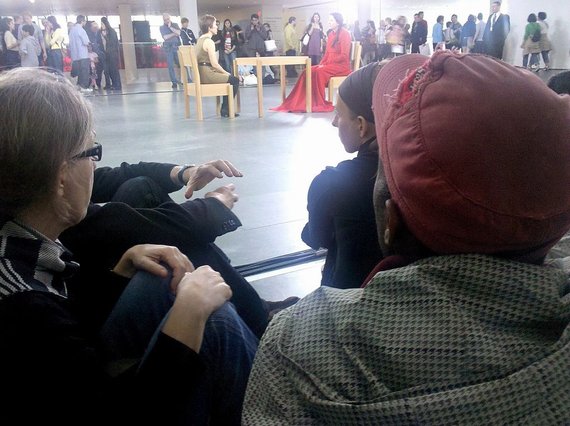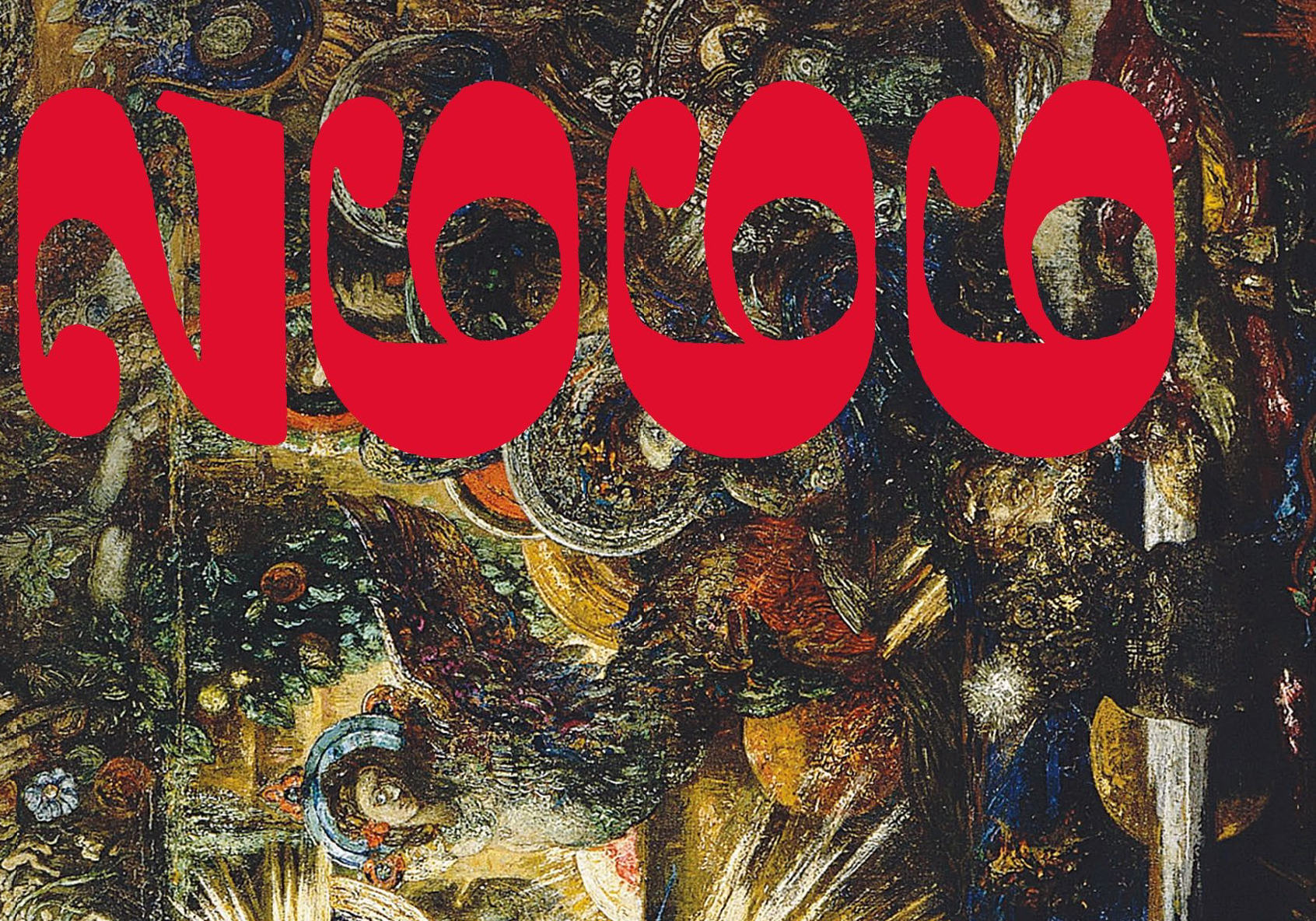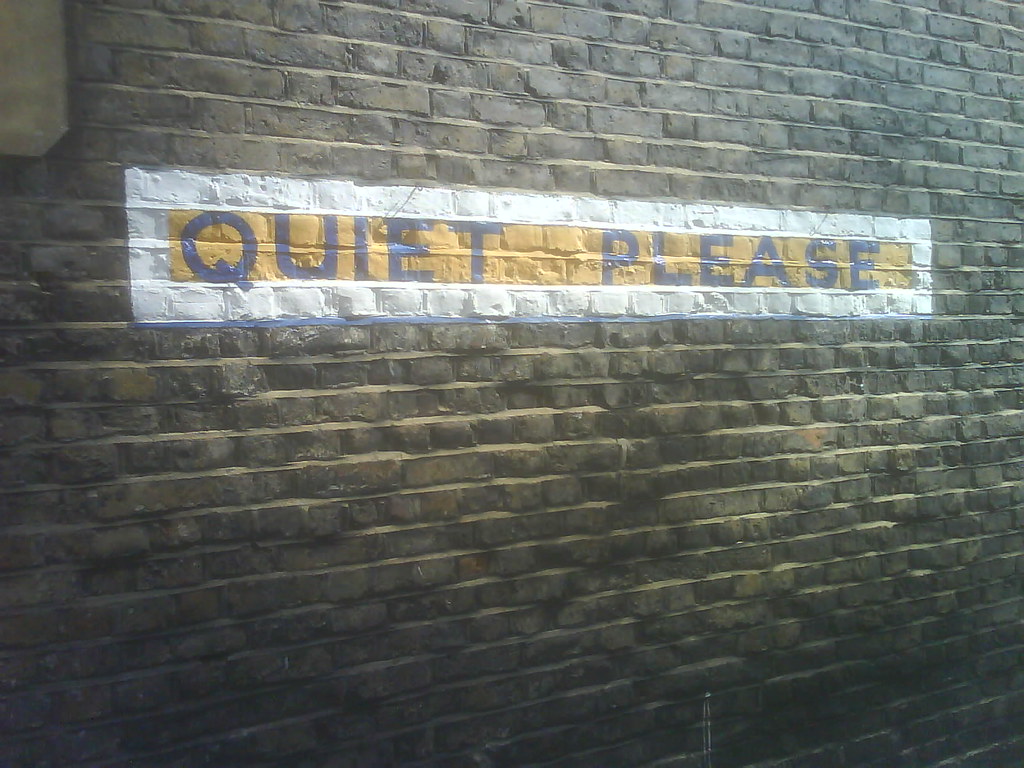
“My name is Marina Abramović and I think I’m an artist,” were the first words the performance artist spoke at a post-show panel last week, two days after the conclusion of her eleven-week performance, The Artist Is Present, at the Museum of Modern Art. I observed the artist twice during this time, once in March and again in April. The only visible differences were her sitting partners and the color of her dress, the first floor-length in blue and the second identical, in red. The colors were selected to aid her endurance: blue to calm, red to invigorate, and in May she wore white for purification. Although I had watched Abramović sit for hours (though not face to face) I’d never heard her speak. In fact, I’d barely seen her move. The way she held her pose with her shiny face gazing forward, she resembled a wax figure from Madame Toussads. Abramović sat quietly with strength, but when she finally spoke, she spoke with command–her husky voice issuing words in an Eastern European accent.
“Anger,” she claimed, was a driving force for staging the re-performances of her work. She listed the mass media, the fashion and design industries, theater, and MTV as culprits who have re-appropriated images and performances from her oeuvre without giving attribution. She would like to lend order to re-performances of performance art, something she also emphasized with her re-performances in Seven Easy Pieces at the Guggenheim in 2005. She acknowledges that re-performed pieces inevitably change, but likens these adjustments to new interpretations of Beckett or Mozart. Abramović added that she won’t allow re-performances that endanger the performers’ lives–such as one piece that involved a pistol and bullet. Still, she dismisses her own, prior self-endangerment with brio: “It was the seventies. I was crazy.”
Abramović’s The Artist is Present played on similar restraints to those in her MoMA performance in the 1980s. Nightsea Crossing consisted of 22 performances in 19 locations where Abramović and her partner Ulay sat facing each other motionless seven hours a day for days on end. Of the powers one gains through stilling oneself in this way, Abramović has commented: “Kafka said in one of his stories, ‘Just sit at a table and do nothing and the whole world will be revealed in front of you.’” Which is exactly what happened with The Artist Is Present, and not only on a metaphorical level. The world came to Abramović. Over two-and-a-half months, 1,545 people sat across from her (while even more waited for the chance) and over 700,000 museum-goers witnessed her atrium performance. Who knows how many more observed from the virtual world as the performance was streamed online. Celebrities sat. Many people cried. Other performance artists co-opted her performance. At the Wednesday evening panel, the exhibition’s curator, Klaus Biesenbach, admitted that when he first envisioned Abramović’s performance, he thought the second seat would often remain empty. He seemed pleased to be wrong.
Also in attendance Wednesday evening were the thirty-six performers who re-performed Abramović’s five pieces within the exhibition. It was revealed that several of the performers had fainted the first day, unaccustomed to the duration and the physical demands of the performances. Marco Anelli, the photographer who sat behind Abramović and took portraits of each sitter’s face, was present. As was Paco Blancas, a makeup artist whose visage resembles Edgar Allan Poe. Paco sat across from Abramović twenty-one times during her performance–more than anyone else–and commemorated the experience by having the number 21 tattooed on his arm. Another woman in the audience said she was overseas when the exhibition started. She began watching Abramović’s performance over the internet, and it quickly turned into an obsession.
Why this sudden obsession with Abramović? Yes, there were nude performances. And Abramović, the artist, was present. But that alone doesn’t offer much of an explanation. Abramović’s re-performances in Seven Easy Pieces garnered less attention even though the pieces were more sensational. Consider her re-performance of Vito Acconci’s Seedbed, where museum-goers listened while Abramović masturbated under the stage and related her fantasies about the observers above her over a loudspeaker. Her re-performance of her own Lips of Thomas involved cutting a pentagram into her stomach with a razor blade and then lying naked on a cross of ice.
The Artist Is Present was on camera. It was interactive and online. Abramović has spoken many times about how her duration pieces have the capacity transform both herself and the viewer. But I also wonder if the interactive and ever-changing nature of the piece influenced the popularity of the performance, which by the end had become a media phenomenon. Gauging the endurance of each sitter was like sport. As my friends and I observed from the sidelines, we speculated how long each person would last. Catherine Lacey at HTMLGiant compared Abramović ’s performance to Zen meditation. There was a competitive and a meditative side, but was there also a gimmick? We the museum-goers were invited to participate in a work of art greater than ourselves, where we became creative subjects as well as voyeurs. Is the overwhelming response to this participatory performance much different than our attraction to reality TV, to YouTube, to monitoring status updates on Facebook? Did The Artist Is Present also respond to a cultural habituation to the constant update? To our narcissism? Abramović said that as she stared into her sitting partners’ eyes she acted as a mirror so that they could look inside themselves.
Or was Abramović’s act of sitting for more than 700 hours and sacrificing sleep each night (waking every 45 minutes to rehydrate) in order to share herself and her art with her audience an act of tremendous benevolence and generosity? I would say both. Abramović called the experience the most profound of her life. She claims, “My spirit is different.” And perhaps that is enough.
[Image credit: Jim Kuhn]







